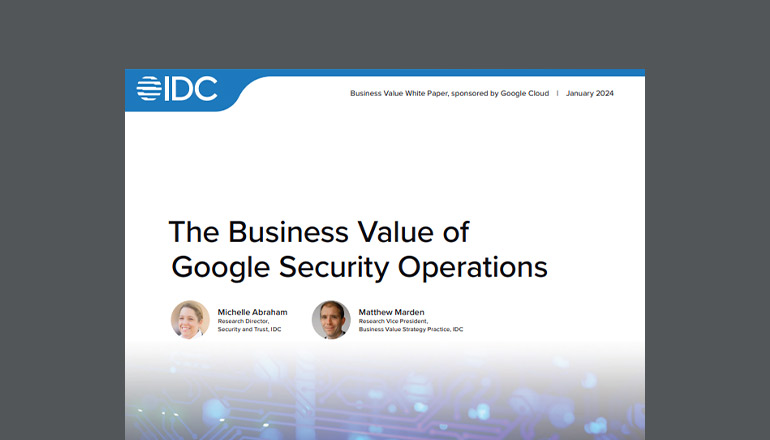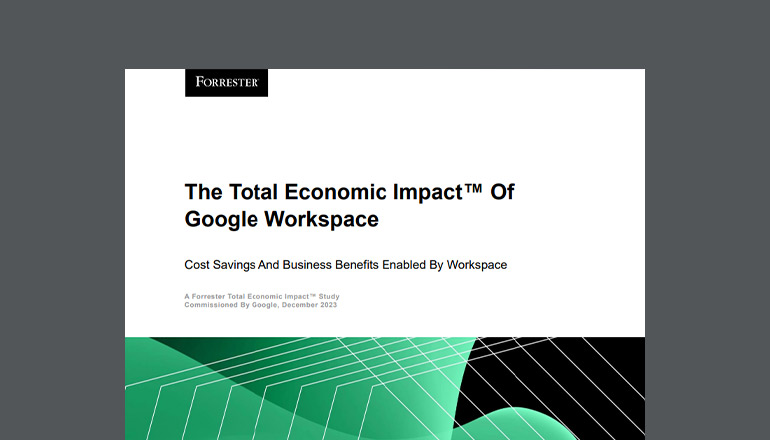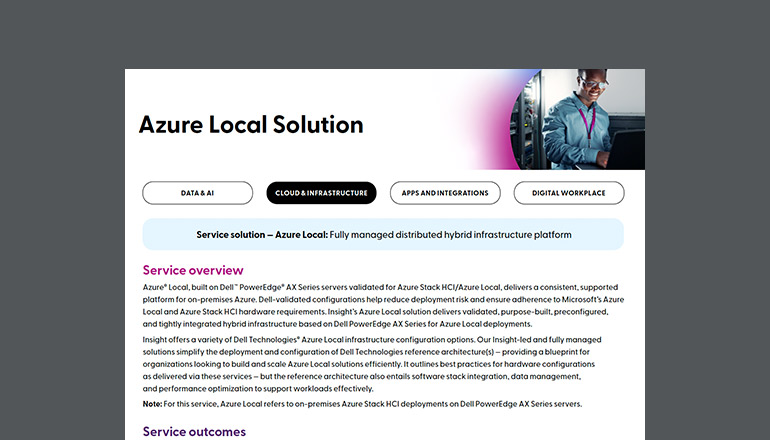Tech Journal Why Anywhere Operations Is a Strategic Trend for 2021
By Stephen Moss / 16 Mar 2021 / Topics: Mobility Modern workplace Change and training Cloud

Almost one year after the mass shift to remote work, many of us are wondering, “Where do we go from here?” Rather than focusing on a return-to-work plan, forward-thinking Chief Operating Officers (COOs) are now collaborating with other business units to create a sustainable “anywhere operations” model — and for good reason.
Events of 2020 tested business resilience, digital readiness and virtual collaboration — all cornerstone components of an anywhere operations model.
It’s been roughly a year since the rapid shift to what we all believed would be a temporary period of working from home. But now that we’ve had ample time to adjust, adopt new tools and settle into new routines and ways of working, it’s clear that traditional ways of operating are a thing of the past.
Gartner coined the new era of work as the “everywhere enterprise” which “describes an organization that uses technology, team structures, processes, skills, and tools to empower a dispersed workforce, harness a distributed infrastructure and serve a ubiquitous customer base.”
Studies have also revealed positive sentiment about remote work is growing — from the individual contributor to the C-suite. A Forrester report found that a little more than half (53%) of workers working from home because of the pandemic would like to continue with some remote work flexibility even after a full return to the workplace. In fact, Forrester predicts, “The number of remote workers at the end of 2021 will be 3x pre-pandemic levels”.
So, what does this mean for CEOs, operations officers and other business leaders who are trying to plan for a post-COVID-19 workforce?
You could follow the lead of industry giants like Twitter, Shopify and even Nationwide, who are all embracing a remote-first work policy. Others — and what we expect to be the majority of organizations — are preparing for a hybrid environment, allowing flexibility for both on-site and anywhere-work. Forrester anticipates about 60% of large companies will choose a hybrid workforce strategy.
Whether an organization is predominantly remote or on-site, anywhere operations is a top technology trend and a strategic priority for 2021.
Forrester anticipates about 60% of large companies will choose a hybrid workforce strategy.
What is “anywhere operations”?
Anywhere operations creates a decentralized enterprise, enabling better business resiliency and access to a broader talent pool. This means companies can operate at the same scale and effectiveness across a myriad of roles and responsibilities, regardless of geographical location. But make no mistake, anywhere operations isn’t the same as work from home. Businesses have to be able to operate from literally anywhere, at any time and in any modality.
A successful anywhere operations strategy should be people-centric and location-independent. As a remote worker, I should be able to hop into an RV and drive around the country and be just as connected and effective in my role as if I were back in the office (permitting I can maintain a high-speed internet connection).
A successful anywhere operations strategy should be people-centric and location-independent.
Like many other trends in IT, the move to anywhere operations was already growing in adoption and then accelerated by the COVID-19 pandemic. Even as little as 10 years ago, conversations were focused around building a mobility initiative. We had mobile phones and tablets we were starting to work from. This was true for office workers and customer-facing roles, such as retail. Workers needed mobile devices to ingest or take orders. The evolution of mobile-first to support anywhere operations is just as much about customers and the customer experience as it is about employees.
Even organizations ingrained in having resources be 100% on-site to do work will be impacted by anywhere operations. That’s because ideas and behaviors have changed. Our new methods of remote collaboration aren’t going away. Other clients, vendors and customers you engage with will need digital access to you, whether it’s a virtual meeting or via an application, some form of anywhere operations is now a necessity.
Employers understand people want the power of choice to work where, when and even how they want to work. And companies are being driven to bring that experience or that behavior through the employee base. Pardon the pun, but anywhere operations is here, and it’s here to stay.
Pardon the pun, but anywhere operations is here, and it’s here to stay.
Top benefits of anywhere operations — and the technology to make it possible
2020 really brought the topic of business continuity to the forefront. The reality is, there are a lot of external forces that can disrupt business to point of close or Disaster Recovery (DR).
Executing with anywhere operations can be a huge leap forward on the journey of business continuity planning and DR, primarily because you've already taken care of a lot of the foundational challenges companies run into, such as enough capacity for people to work from different locations.
In the past, DR was warm, cold or hot. We used words like that to describe assets that were sitting somewhere else to be exercised. You’d have to send auditors out to inspect a data center and dedicate a weekend to spin everything up and see if it’s working properly — I’ve been there, done that.
With anywhere operations, we eliminate that wasted effort because we keep everything operating everywhere, accessible to anyone in any way.
Anywhere operations consists of what I call cloud modalities. These are applications that are running in the cloud now and doing things not from just a traditional enterprise technique, but also have the ability to do that at scale. Operations aren’t dependent on one server, one firewall, etc. Instead, it has the right diverse configuration. I always use that word, “diverse” versus “redundant” — there's very important nuance between the two.
Anywhere operations also means having the ability to run business remotely — a benefit Ignite Brewing Company appreciates. Ignite Brewing Company worked with Insight to implement a Connected Platform solution using sensors, Artificial Intelligence (AI) and thermal cameras. From the convenience of a mobile device, any designated administrators for the brewery can view reporting data and address issues such as elevated refrigeration temperatures in real time.
Co-owner Michael Chisnell says, “If I can't run the business from my cellphone, I'm not doing something right.” I love this because it speaks to another key benefit of anywhere operations — you don’t have to be on-site to resolve problems. Oddly enough, we may be discovering that removing people from physical locations and allowing technology to intake and aggregate data is paving the way for greater agility and better outcomes.
Oddly enough, we may be discovering that removing people from physical locations and allowing technology to intake and aggregate data is paving the way for greater agility and better outcomes.
Automation is another trending technology that’s supporting anywhere-work. By automating workflows, transactions or approvals, companies can accelerate processes while freeing human capital. The transactions are done securely, pulling data through applications (operating from the cloud) so the physical environment is irrelevant.
And of course, a primary benefit for anywhere-work is the anywhere-talent. Companies benefit from an expanded talent pool while workers now have the luxury of moving out of areas with a high cost of living without having to leave their employer. This speaks to the greater benefit of job loyalty and employee choice. Anywhere-work gives employees the power of choice to work wherever and however works best for them — and now you're unlocking human capital potential. I think this will have tremendous impact on earnings for companies and push them to outperform because now you have the power to attract and retain the right talent to meet the needs and demands of the company.
What a decentralized enterprise means for IT
I have great compassion for all my peers in the IT security space. It’s a lot of hard work, and that was true even before we went remote when the majority of devices, people and data were centralized and within an IT security safety net. With anywhere operations, IT will need to manage cloud infrastructure, application architecture, remote endpoint management, remote IT support and new security aspects.
For example, beyond protecting data, IT must also adopt zero-touch provisioning and support secure asset management to get devices to and from employees while ensuring secure access. These issues might be manageable when you’ve got maybe less than 20% of your workforce mobile, but it’s a different ballgame when you have entire departments working remotely.
Remote IT support is another hurdle many organizations will need to address. Without access to desk-side IT support, companies will need to set up self-service tools as well as a virtual IT helpdesk.
To be honest, the work is so complex, I don’t think there’s a single company that can do it all alone. In a hybrid and anywhere operations environment, the process for properly securing and distributing assets at scale, as well as performing lifecycle and disposal of those assets on the tail end of life, all look very different. My best advice to IT directors is to lean on an external IT partner like Insight. Find a true partner who can help craft your IT strategy and manage what your own IT can’t or doesn’t want to do.
Business leaders must come together before going “anywhere.”
Leaders from various business units must come together and collaborate on a cohesive, sustainable strategy. The majority of businesses are through the initial struggle of rapidly enabling remote work operations. From that exercise, organizations now have — for the most part — some of the foundational requirements for anywhere operations: collaboration software, cloud, remote access and other critical remote working solutions.
However, the urgency behind going remote didn’t leave much time to create a technology roadmap or solution comparisons. You may have “MacGyvered” together ad hoc solutions and tools. At the time, the consequences of such choices were something organizations could live with. But now with anywhere operations as a strategic priority, it’s time to reevaluate and deploy a sustainable model. This could be changes in technology, processes, policy and much more.
As hard as it probably was to make the initial shift to remote operations, creating sustainable operations is also a lot of work. Organizations need to understand it’s not just technology at play — there are cultural aspects and policy changes to consider too. Don’t underestimate the power of Organizational Change Management (OCM) to accelerate and enhance the anywhere-work experience. Anywhere operations must support a people-first, technology-second work environment. And it has to be framed that way across every aspect of the company to find success.
Don’t underestimate the power of Organizational Change Management (OCM) to accelerate and enhance the anywhere-work experience.
Acquiring the right devices and assets is the obvious essential, but equally important is organizational change management. Many times, folks like myself, we think about the technology. We spend a lot of time thinking about the ones and zeros, the applications, the networks and the bandwidth, and the latency and the performance. But it’s also about behavior, and that behavioral aspect can’t be left out of the equation. If you’re working with a technology partner on a sustainable anywhere operations strategy, make sure OCM is part of that plan.
I’m very bullish that anywhere operations has a positive accretive impact on a company’s bottom line. It’s a very exciting future for companies that can make the choice for anywhere operations.






















